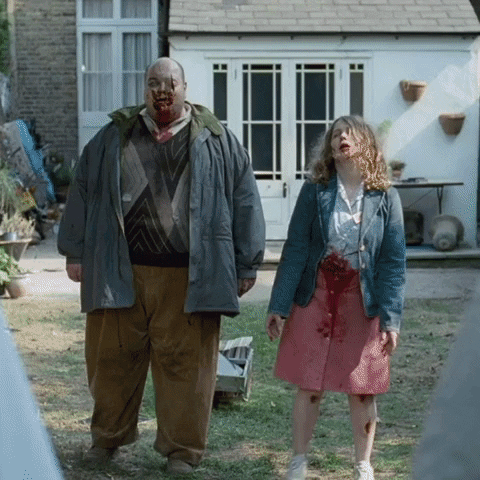A Microbiologist's Guide to Zombies
Whether you’re intrigued or terrified of them, zombies are an iconic staple of the horror genre, spawning their own franchises with titles like Dawn of the Dead, Resident Evil, The Walking Dead and many more. Zombies may come in different shapes and forms, but they all have one thing in common - they’re caused by microbes.
Dr. Amanda Veri, a Research Associate at the University of Toronto, discusses the possible microbes behind zombies in a special RCIScience presentation exploring the Science of Scary.
Microbes
Microbes are tiny organisms that can be found everywhere, but can’t be seen with the naked eye. We rarely hear about microbes in zombie movies - instead we’re met with generic causes like infection, pathogen, or contagion. But it’s these microbes that help the zombies to spread their disease when they bite humans.
Any of the main classifications of microbes could hold the potential to cause a zombie infection. Examples include:
fungi - responsible for athlete’s foot and yeast infections
bacteria - can cause strep throat or food poisoning
viruses - cause common cold and flu, HIV. Responsible for the current COVID-19 global pandemic.
Prions — misshapen proteins that can transmit their misfolded shape onto normal variants of the same protein — also hold the potential for zombification. They characterize several fatal and transmissible neurodegenerative diseases in humans and many other animals.
Zombie Symptoms
There are many characteristic traits or symptoms of a zombie infection. But where can we see examples of these in real life?
Decomposition
One unique trait of zombies is body decomposition. Necrotizing fasciitis or “flesh-eating disease” is a nasty bacterial infection resulting in skin decomposition.
Motor problems, groaning or lack of communication, and becoming angry or violent
These symptoms are seen in Mad Cow disease. The disease is caused by prions that infect cows. Once the prions spread to the spinal cord, the cow cannot move properly. As the disease moves to the brain, it can change the cow’s behaviours, making them violent.
Biting or eating people and foaming at the mouth
These symptoms can be explained by a genus of RNA viruses called Lyssavirus, which includes the virus responsible for rabies. This virus can cause the infected animal to change their behaviours and become aggressive. Animals with rabies avoid water, leading to a higher concentration of viral particles in their saliva.
A close up view of dead ant infected with O. unilateralis attached to a leaf vein. Image credit David P. Hughes Maj-Britt Pontoppidan via Wikipedia.
Dead, but still moving and a lack of free will
In nature, parasites can bring about these symptoms in ants. Ophiocordyceps unilateralis is a fungus that infects ants, causing them to climb onto leaves or sticks. Once the ant reaches the peak of the stick or leaf, the fungus kills it. Growing within the ant’s body, the fungi then erupts a main stem from the back of the ant’s head and releases spores to infect others.
How to Kill a Zombie (Safely!)
May we suggest you don’t take your zombie survival skills from popular zomcom Shaun of the Dead!
It may look cool on screen, but beating zombies with bats and other close-range combat is not an ideal way to tackle this foe! Chances are that their blood and guts will spill everywhere - including on to you. And if we’ve learned anything from COVID-19, it’s to keep our distance from disease spreading droplets.
Dr. Amanda Veri suggests that the most effective approach is to use fire. Fire should destroy the zombies’ body without spreading the bodily fluids, and melts the zombie’s brain, rendering it truly deceased.
While 2020 has been a particularly challenging year, the chances of encountering zombies in real life remain slim since most of the microbes responsible for zombie-like symptoms are found in animals or insects. They might make for a thrilling enemy, but you can expect the next zombie apocalypse to take place exclusively on your TV or video game console.
—by Rebecca Dang


